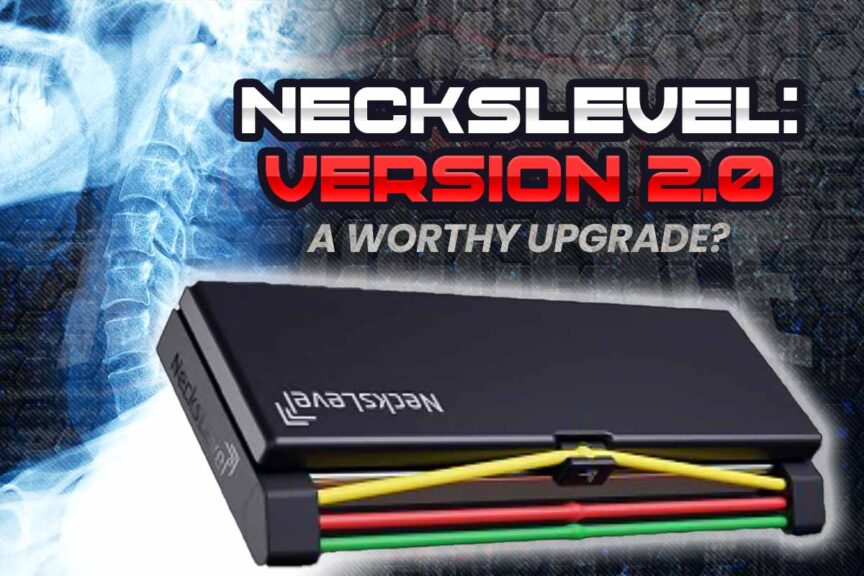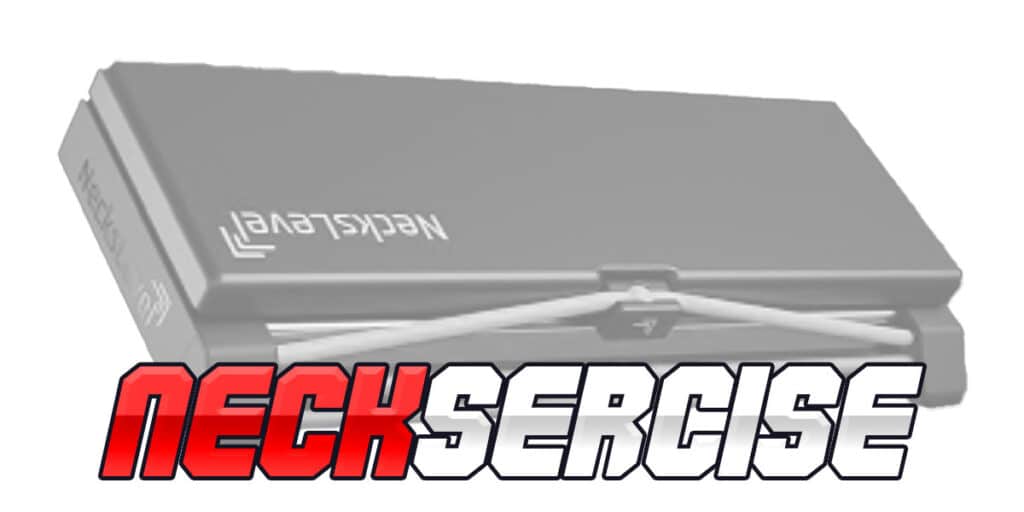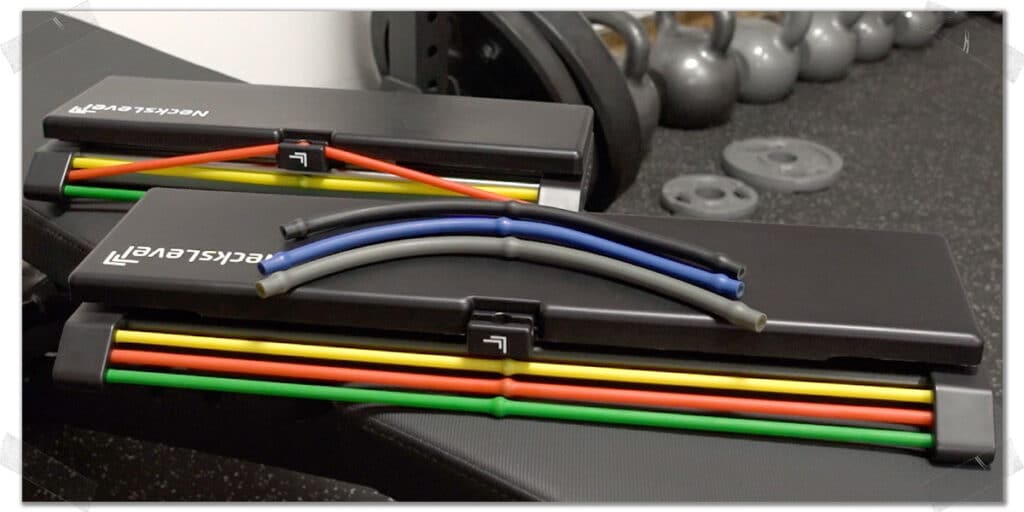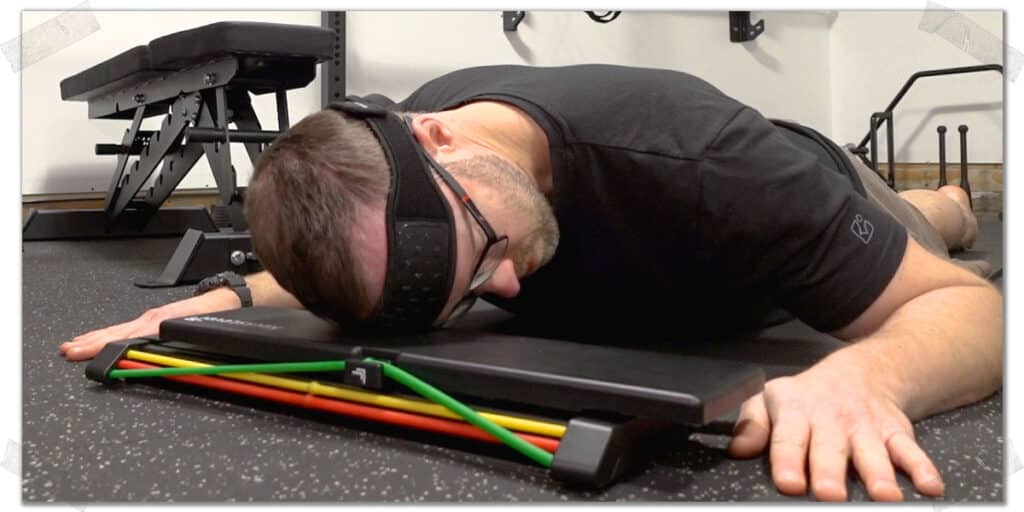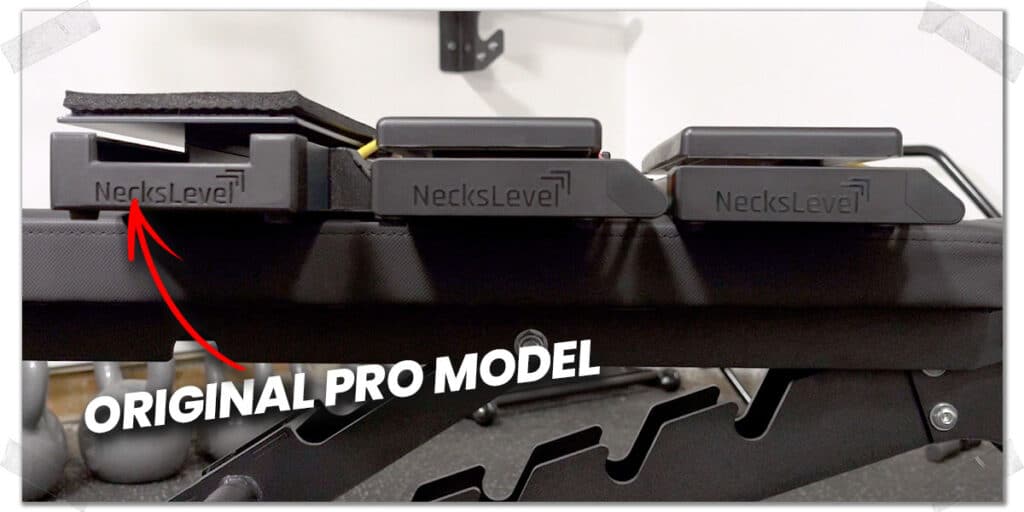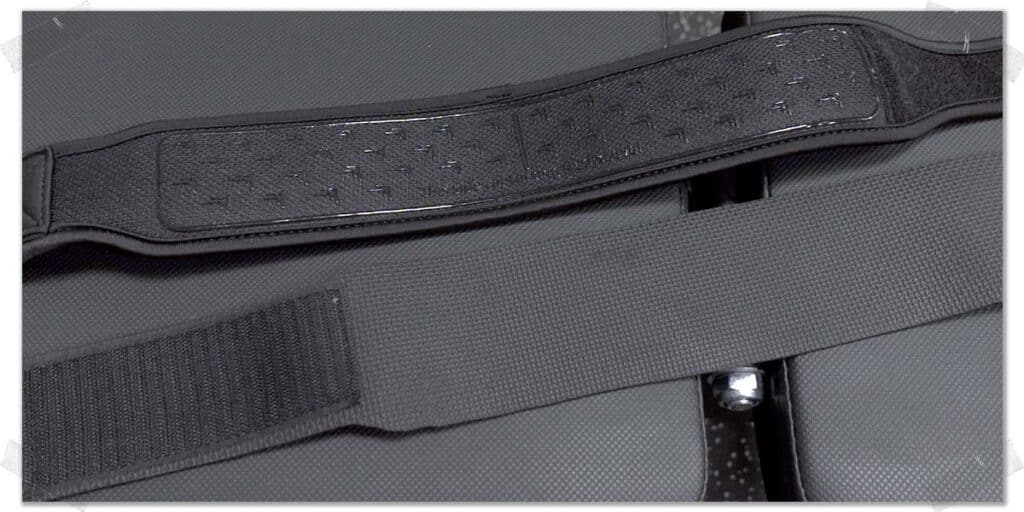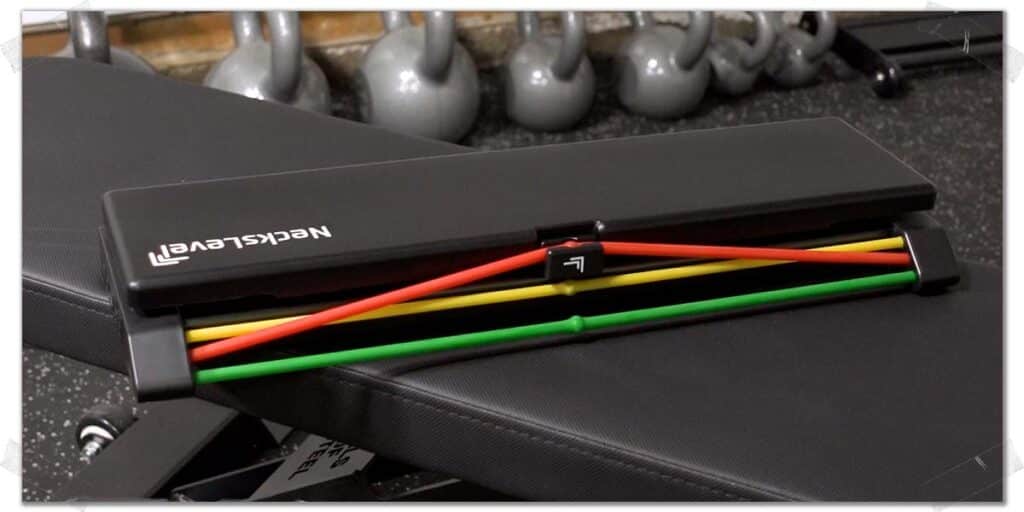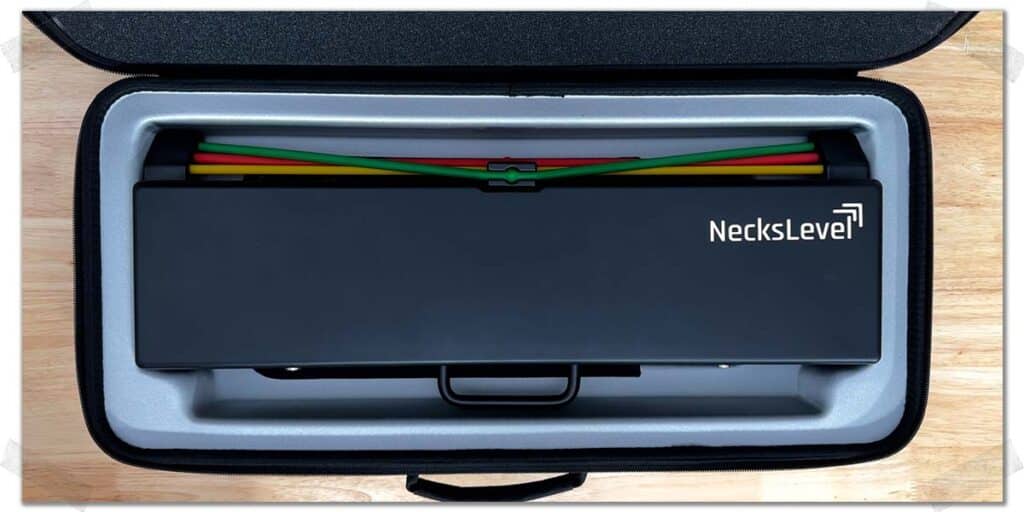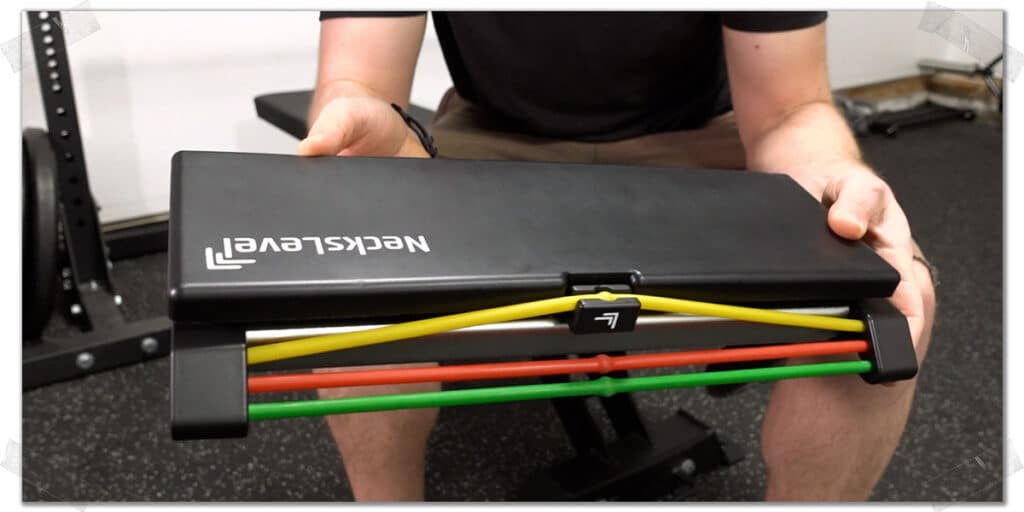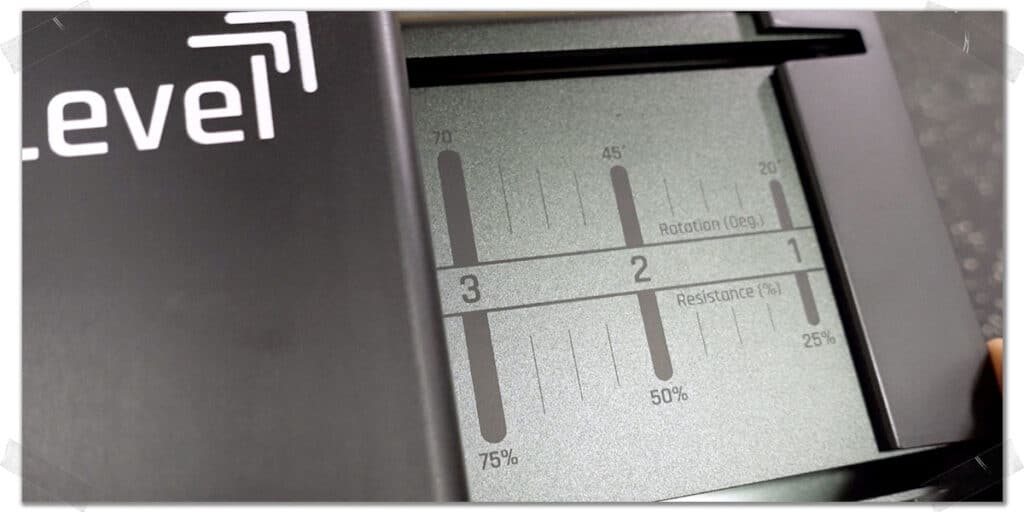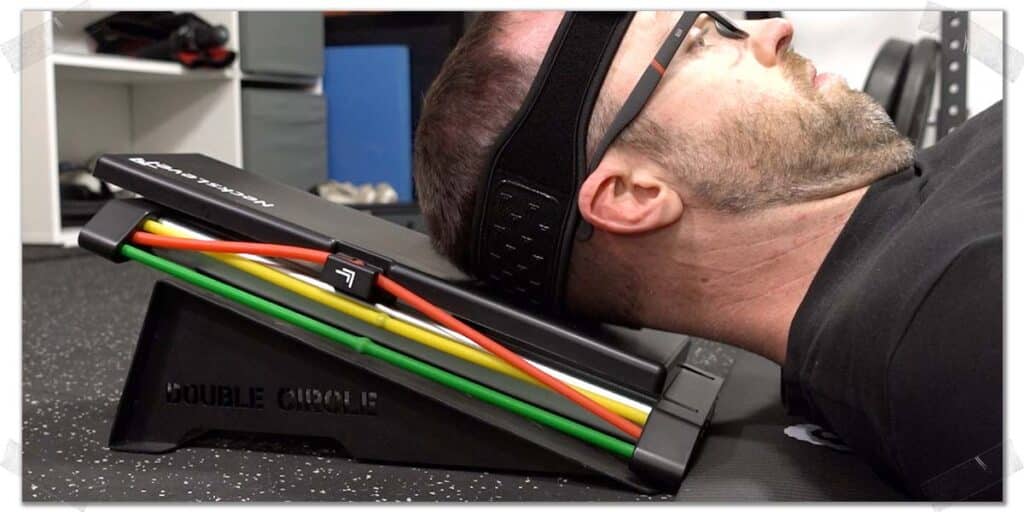I always get super frustrated when I have a problem on my hands while knowing what it will take to fix that problem but not having the right tools for the task. It’s a frustrating feeling because I often feel like the problem is just starting right at me while I’m helpless to implement the solution.
And I say that since there’s a surprising lack of tools out there for improving, optimizing, and maintaining the health and function of one’s neck. And that’s incredibly unfortunate because we often lack effective tools that can help eliminate various causes of neck pain and dysfunction. It’s a critical problem to overcome since improving the strength, mobility, and overall health of one’s neck will ultimately improve their quality of life.
Experiencing neck pain is a surprisingly common occurrence, but it doesn’t have to be like that.
I recently got my hands on some new devices designed to improve neck health and have learned if they are indeed the right tool for the job. And it’s time to pass my findings on to you.
So, we’ve got a lot to talk about here because I don’t want you to be in pain, and I want you to be an informed consumer about any purchases you make when it comes to finding ways to live a stronger, healthier life.
I’ve got some secret sauce to dish out in this article for looking after the health of your neck. So, I’m going to talk about a cool piece of kit, and also point you in the right direction for steps you can take to optimize your neck health without any equipment. Because, you’re absolutely worth it.
So, let’s get after it.
A small request: If you find this article to be helpful, or you appreciate any of the content on my site, please consider sharing it on social media and with your friends to help spread the word—it’s truly appreciated!
The New NecksLevel Devices
Here’s the deal, if you don’t know me, my name is Jim. I’m a physical therapist and strength & conditioning specialist, and I’m downright geeky when it comes to helping you learn the science and art of coming back stronger.
But you’re likely not here for me, so let’s talk about these recently released devices that have just hit the market, what they do, who they’re for, if they’re better than the original model, and how to get the most out of them.
Nearly a couple of years ago I invested in the original NecksLevel model for my clinical practice, which has arguably been the most impactful clinical purchase I’ve made since that time. I came across the NecksLevel online and knew that, for the sake of my patients, I needed to get my hands on it.
So, I purchased the device with my own money, tested it on myself and started using it on my patients within the clinic, and have had tremendous success with it since then. Click here if you want to read my article on the original clinical model.
Disclosure statement
As we start to rock and roll here, I want to let you know that the folks at NextLevel shipped these new models to me for review. That being said, here’s my promise to you:
- Everything in this review is my honest insight into my thoughts about these new devices.
- The folks at NextLevel don’t get any input on what I say, nor do they get to see this video before it’s released.
- I want you to spend your money wisely and always advocate for my viewers to stay within their financial budgets, even if a device is worth their hard-earned money. I’m all about financial health, not just physical health.
Related Content:
Device background
If you’re not aware, the NecksLevel device is a slide board with varying resistance levels that can be utilized for numerous aspects of neck rehabilitation. It can be used for increasing neck strength, endurance, and even improving overall mobility within the cervical spine.
The device is the brainchild of Dr. Scott Dickenson, who, like me, has a clinical doctorate in physical therapy.
It’s a highly practical and versatile piece of kit. It makes cervical exercise convenient and isn’t complicated or intimidating to use. In that regard, it’s seriously a triple-threat device.
Even better, you can have average Joe’s use it, and high-level athletes do the same. It’s appropriate for all kinds of demographics.
The device really is growing in popularity these days, and it was really cool to see it being used by NFL quarterback Patrick Mahomes in a Netflix trailer a short while ago…even though I’m tired of seeing the Chiefs in the Super Bowl. Next year, next year the Bills are going!
But aside from my disdain for the Chiefs always being in the Super Bowl, the main shortcoming of the original NecksLevel device is that it was marketed primarily for clinicians, such as myself, who work with patients in the clinic. This left home exercise prescription using the NecksLevel out of the equation for those patients looking for therapeutic actions they could take at home.
Sure, the original model could be purchased for home use, but the purchase price made it highly impractical for most patients to do so.
Naturally, the new devices have hit the market, and much to the pleasure of myself and my patients, these ones are marketed for home use. But that’s only one of a few different reasons why I’m thrilled these new models exist; I feel some significant upgrades have been made here, which will help benefit home users.
“Each of these new models has a notable improvement over the original version, and one of these new models has a significant upgrade that made my day when I learned about it.”
Upgrades to the new NecksLevel models
So, if both of these new models look very similar and look like they do the exact same thing, are they really that different from one another? Well, let’s talk about what’s worth knowing.
These two new models are the NecksLevel Pro and the NecksLevel Glide. Compared to the original version, their overall operation and application are the same. Therefore, you can use each of them for the same neck-strengthening exercises and rehabilitation strategies.
However, there are indeed some key differences that you need to be aware of.
Essentially, you can think of these two new models the same way that Apple has their respective models of their iPhones; the original NecksLevel model, in a sense, is like an iPhone Max – as it’s the largest and geared towards more “power users,” while the NecksLevel Pro is like an iPhone Pro model, and the Glide is like a standard iPhone or iPhone mini model. It’s not about one model being superior to another; rather, one model being more appropriate for an individual’s needs over another.
Now, each of these new models has a notable improvement over the original version, and one of these new models has a significant upgrade that made my day when I learned about it. And it’s significant enough that, at times, I find myself preferring using this particular new model over the original.
And we’ll get to this favorite upgrade of mine shortly. But let’s first run through some changes and upgrades found on both models.
Related content:
Upgrade 1: Reduced Profile Height
This first improvement with both models might not look like much, and the value of the improvement may perhaps be subjective, but knowing how I use the NecksLevel for myself and my patients, it’s a welcomed upgrade.
If you look at either of the newer NecksLevel models, you’ll notice they have a reduced profile height compared to the original, and for me, it’s a big deal.
What’s the big deal about a lower profile, even if it’s just by a little bit?
Well, for certain populations I work with, a higher profile, at times, makes it a bit trickier to get their necks in the position I’m looking for. Now, it’s not a make-or-break issue, as I’ve found numerous ways around this, depending on the exercises I’m having a patient perform, but doing so always requires an extra step.
You need to remember that I work with a wide range of neck issues and body types. Additionally, I don’t always have patients lying on their backs when performing neck strengthening exercises; I often have them on their stomach or even their sides.
And I often have found myself wishing that the original model could be just a bit lower to the ground. When it comes to the cervical spine, it’s important to understand that small positional changes can lead to big differences in how exercises feel, how they’re tolerated and how they’re able to be performed. Ultimately, what I’m trying to say is that it’s easier to raise the height of the device, if needed, than to lower it.
“Sure, the original NecksLevel model could be purchased for home use, but the purchase price made it highly impractical for most patients to do so.”
Now, be aware that for the average person, especially the home user, the height difference between the original and newer models will likely be negligible and not even perceptible. Again, this might just be a subjective upgrade altogether.
But, for me, I’m essentially a power user of this device since I use it on numerous patients every week in my clinical practice, in addition to using it on myself. So, for me, little changes such as this an be quite valuable.
Alright, now we need to talk about an upgrade to each of these models that is not subjective at all.
Related content:
Upgrade 2: A MUCH better headband
A notable weak point of the original NecksLevel device wasn’t necessarily the device itself but rather the headband used with the device.
But check out the upgraded headband that comes with each of these models! It has been significantly improved from the previous iterations, which were a bit prone to falling apart. With these new headbands, you’re getting a maximal grip on the board and a headband that’s more robust than the previous versions of headbands.
In fact, to call it an upgrade doesn’t really do it justice. It’s more like a complete redesign; it grips the board much, much better, it’s much easier to firmly fasten around your head, and the Velcro keeps everything firmly anchored in place, so there’s no issues with the band slipping on your head or on the board.
Personally, I think everyone at NecksLevel knocked this upgrade out of the park.
Alright, now let’s look at each individual model in its own light.
Clinical Model: The NecksLevel Pro Glide
The NecksLevel pro comes with a well-designed carrying case, which is a win over the original model, which did not. A carrying case isn’t an issue if you’re planning on using it at home, but with my original model, this was tricky as I transport this thing all over the place and having a carrying case would be nice. This is a well-designed case, and I liked it the moment I first saw and used it.
I was also thrilled to see that the Pro model comes with additional higher-level resistance bands that can be swapped out if needed. With the original model, you could also purchase these bands, but they didn’t come with the device itself.
I’d say that the average individual might not need anything higher than the standard resistance bands that come attached to the device, but there are certainly times when higher levels of resistance might be needed for stronger individuals or those who are taking more of an injury-prevention approach with their neck health.
Home Model: The NecksLevel Glide
The NecksLevel Glide is the more economical of the two new models, which makes sense since this model is designed for home use. It does all the same things as the Pro model, but it doesn’t have the significant clinical upgrade feature that the Pro model has, which I’ll discuss momentarily.
As with the Pro model, the bands that come with the Glide are swappable, so it’s not like you’re confined to only using these three levels of resistance, but you will have to purchase these higher-level resistance bands if you opt to buy the Glide.
For what it’s worth, for the average individual, I’d say you probably won’t have to worry about buying the heavier resistance bands. This is especially true if you have a neck that tends to be a bit stiff or painful; chances are that you’ll be just fine with the included bands.
The Glide also has a bit of a smaller profile in comparison to the Pro model, which might be more ideal for some users. This model reminds me of the iPhone mini model; it’s still very practical and powerful – just geared a bit less to those who don’t consider themselves to be a power user of the device.
Additionally, this model doesn’t come with a carrying case, so you’ll want to keep this in mind if you think you’ll be transporting this little guy on a regular basis. But again, since this model is intended for home use, paying for an included carrying case doesn’t make much sense.
The biggest Improvement
Remember a moment ago when I talked about a significant improvement to one of these devices when compared to the original clinical model? Yeah, this is a big deal, at least for me.
I love the clinical model and will still be using it for many years to come. But it has a mild shortcoming at times, which, for me, as a clinician, can make it a bit tricky if I’m using on my patients. Not always, but sometimes, to be certain.
Fortunately, this particular issue of mine has been taken care of on the Pro model, and here’s what I’m talking about:
My favorite new feature unique to the Pro model is the built-in measurement system, which allows for an accurate reading for the range of motion occurring on any neck exercise performed. It’s not an upgrade you’ll find helpful if you were to use the device on yourself, but if you’re a clinician or someone who wants objective data to measure for others who use this device, this is an outstanding feature to have.
I found myself wanting something like this on the original model, as it would have been very helpful for tracking objective data and standardizing certain exercises with different patients, so I’m thrilled to see this added to the pro model.
Being able to measure the distance the board has moved or the range of rotation that has occurred makes it so much easier for me to quantify measurements and data when I have patients using this new model compared to the original clinical model.
Related content:
Verdict: Are these new models worth it?
Everyone’s financial situation is different, so I want to be mindful of this. However, if you look at the cost-to-benefit ratio, this device can absolutely be worth its weight in gold in terms of the money it can save in the long run when weighed against the cost of multiple physical therapy, chiropractic, or osteopathic treatment sessions.
And by this, I mean either by keeping your neck strong and healthy, to begin with or by recovering from aches, pains, weakness, and other less-than-ideal situations that can arise from a dysfunctional neck.
Now, let’s be very clear here: when dealing with neck pain, evaluation and treatment that is conducted and carried out by a licensed healthcare professional is always your best bet. If you’re not sure what’s causing your neck pain, I strongly advocate you get an assessment and treatment plan from an appropriate individual.
That being said, for various aspects of neck rehabilitation, a home exercise regimen is often warranted. This can consist of mobility exercises, endurance exercises, strengthening exercises, or all of the above, which the NecksLevel can assist with.
Much of the time, as an individual re-gains strength, endurance, or mobility, the need for frequent treatment within a clinic spaces out and a heavier reliance of regular home exercise becomes critical for long-term success. And that’s exactly where the NecksLevel can shine – it can help with short-term and long-term rehabilitation and neck health.
This means that once your therapist helps you lay out your plan of attack, depending on your condition, you can likely cut down on the frequency and amount of clinical treatment you may require, saving you lots of time, money, and stress in the long run.
And that’s exactly what I, as a physical therapist, want—to see my patients less and help them feel empowered and confident about staying out of the clinic. As I always jokingly say to my patients, “I love getting to work with you, but I never want to see you again!”
So yeah, to me, the NecksLevel is absolutely worth it. My fellow colleagues and I at our clinic have helped a few hundred patients make substantial improvements with the original device over the past couple of years.
“Being able to measure the distance the board has moved or the range of rotation that has occurred makes it so much easier for me to quantify measurements and data.”
Options: Which one to get?
So, how do you determine which one is best to get? Both of these new models do the exact same thing, don’t they?
Well, after spending some time testing out each new model, here’s the criteria I would consider if trying to make a decision on which one might be best for your home needs.
If you’re planning on performing simple neck strengthening exercises for home use, the NecksLevel glide is certainly your most financially cost-effective version, and it will get the job done just fine. You may need to purchase additional higher-level resistance bands as time goes on, but that will only cost a few extra dollars, should you need them.
If you’re a personal trainer, therapist, or other allied healthcare professional who anticipates the need to transport your NecksLevel, or plans on putting high volumes of usage through the device, or if you need to quantify an individual’s movement, the Pro version will likely be more optimal.
Basically, if you’re going to be a home user, get the Glide—you’ll be spending extra dollars on the Pro version without tapping into its added features. And if you’re a healthcare professional, get the Pro, as objectively tracking motion will be immensely beneficial.
Final thoughts
I think super highly of NecksLevel, and after all of the success it’s generated with my patients over the past couple of years, I’m absolutely thrilled that there are new units that are more financially feasible for home and clinical use.
They can be a game changer for plenty of folks who need ways to look after their neck health at home. As I say within every video, just make sure you stay within your financial budget for any purchases you make. Don’t ignore your financial health.
And if you’re on a tight budget right now, don’t sweat it; you can check out the bonus content here for what you can consider in the meantime.
Bonus: Neck Exercises
So, if you feel that the NecksLevel isn’t for you, or it’s not within your budget, there are ways you can still accomplish some neck strengthening using some basic Theraband at home. I’ve made a video on it, and I often use the exercises within that video for patients who need introductory exercises they can perform at home without any dedicated equipment.
So, if you’ve got a piece of Theraband, you can check out my video below on performing a home strengthening routine for your neck. You’ll learn how to perform basic isometrics and progress to additional movements that can start to strengthen and optimize your neck’s health.

Hi! I’m Jim Wittstrom, PT, DPT, CSCS, Pn1.
I am a physical therapist who is passionate about all things pertaining to strength & conditioning, human movement, injury prevention and rehabilitation. I created StrengthResurgence.com in order to help others become stronger and healthier. I also love helping aspiring students and therapists fulfill their dreams of becoming successful in school and within their clinical PT practice. Thanks for checking out my site!

